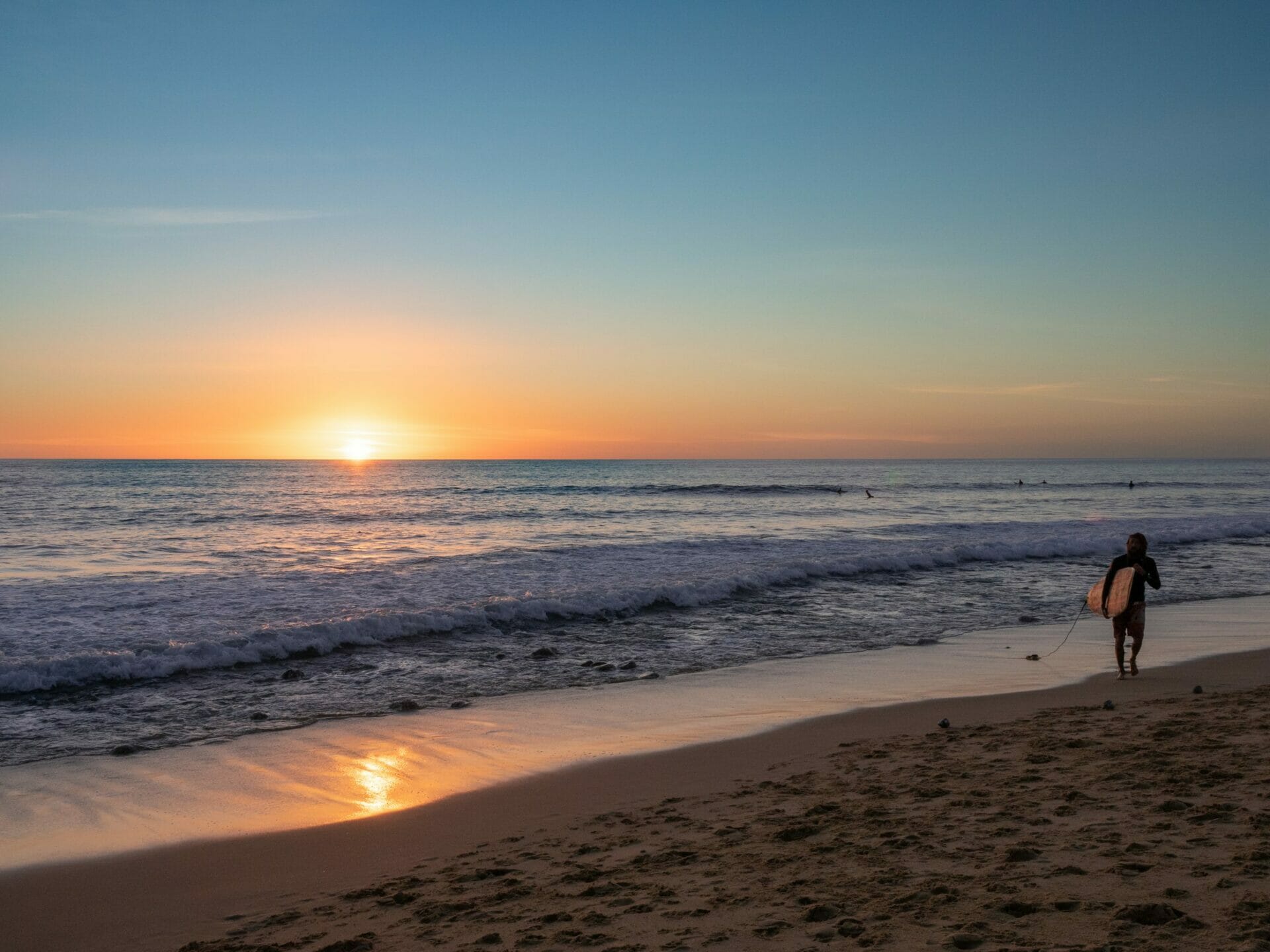
Vanlife diaries #44: Todos Santos & taking the ferry from Baja to Mazatlán, Sinaloa in mainland Mexico
Last Updated on 4 January 2024
For our last week in Baja, we drove north from Cabo along the wild Pacific Coast to explore Todos Santos, which ended up being one of our favourite destinations on the peninsula. It was genuinely difficult to tear ourselves away from the beaches, whales, and sea turtles— but we had a ferry to catch onwards to mainland Mexico for the next leg of this epic adventure!
What we’ve been up to this week
Todos Santos, Baja California Sur
Leaving behind the tourist-fuelled chaos of Cabo, we arrived at the start of this week in Todos Santos, which translates to “All Saints”, a picturesque and charmingly bohemian surf town on Baja’s west cape.
By many accounts, it’s the next big thing, and after spending the better part of a week exploring ourselves, it’s all too easy to make the exact same prediction— Todos is right on the cusp of major discovery, a perfect pocket of sandy beaches, colourful shops, pumping surf, and a haven for whales and sea turtles that, if only for another moment, remains blissfully unsaturated.

When we rolled into town, we already had the name of a campsite from some friends we’d met along the East Cape: La Pastora.
With the promise of an expansive stretch of sand, whales breaching right off the beach, and passable mobile reception, we planned to spend several days enjoying the Pacific Coast—which we’d not seen in several weeks, having instead hugged the east coast along the Sea of Cortez for a majority of our journey south.

La Pastora more than lived up to the reviews, and after just a few hours, Dan was lamenting that we’d wasted any time at all in Cabo San Lucas when this was waiting for us just an hour away. Indeed, this is the kind of spot that we’d happily post up for months on end just to enjoy the kind of easy vanlife we’ve come to love in Baja.

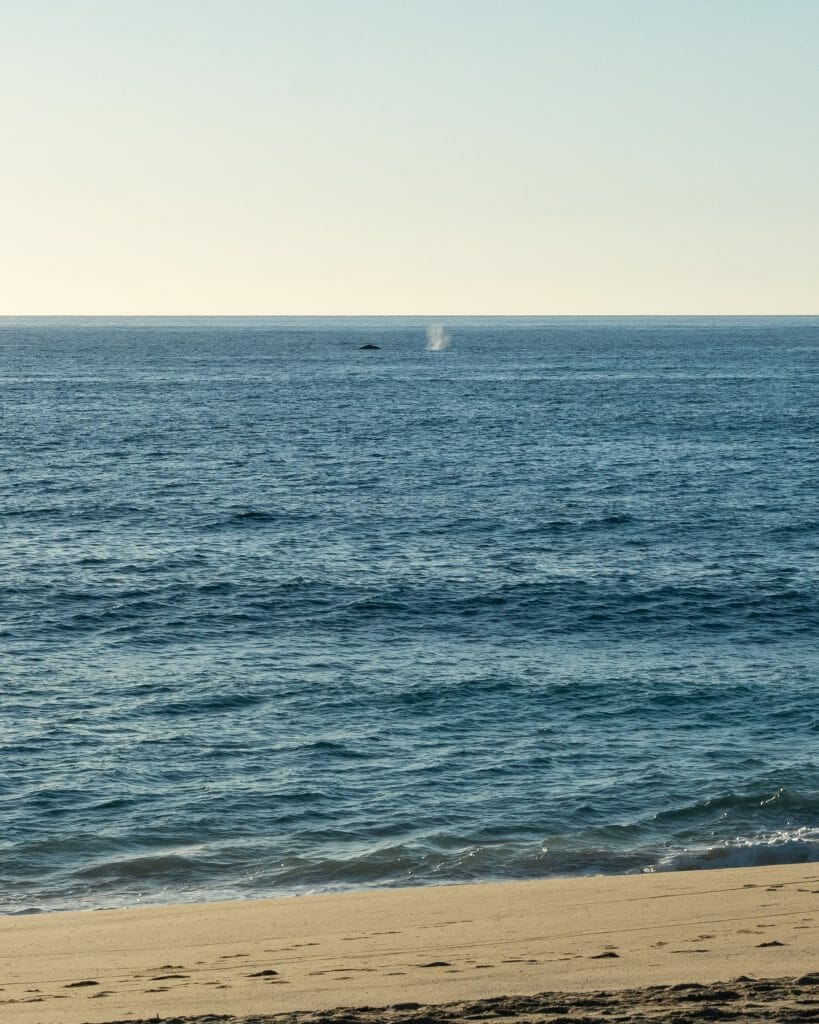
We spent the next several days wandering through town, crashing through the surf, setting out chairs for the nightly “whale show” (what we’ve come to call the daily parade of humpback whales that swim within 100m of shore, typically around dawn and dusk), and even attending a turtle release a short distance up the beach.
This last activity was actually the entire reason I’d wanted to visit Todos Santos in the first place, and although I found plenty more to love once we arrived, watching baby turtles take their first wobby steps toward the ocean was unbelievably magical and certainly worth the trip.

Turtle release in Todos Santos
Tortugueros Las Playitas is an amazing local non-profit organisation dedicated to the protection and preservation of sea turtles, which are critically endangered due in large part to habitat destruction and the threat of predators on the beach.
The program was conceived by a local biologist who still runs the centre today with the help of her two eco-driven children and a rotating cast of dedicated volunteers, some of whom assist for a single day and others who travel to Todos Santos for an entire season specifically to participate in these valiant conservation efforts.
An incredible amount of passion and dedication has grown this program to its modern success— aside from permits from the Mexican government, all funds are self-raised and almost all labour is on a volunteer basis— yet there’s a staggering amount of science and data involved in ensuring success for the turtles, from a temperature-controlled, custom-built incubation greenhouse to long-duration monitoring of reproductive success.
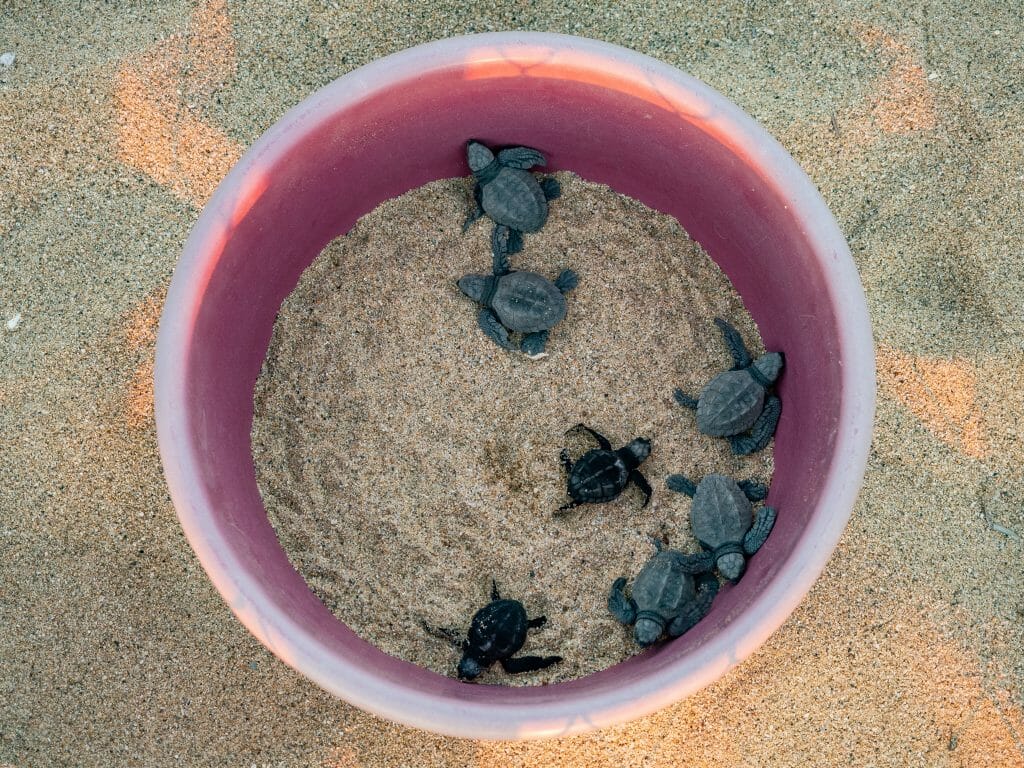
Female turtles return to their own birthplace to lay eggs, but not until they’ve reached sexual maturation around 20-25 years of age, so the centre is just now beginning to see the incredible impact that their efforts are having on the fragile leatherback population in Baja California Sur as previously incubated mothers journey up the beach to lay their own hatchlings, who will also be incubated here to increase the likelihood of survival.
It’s a beautiful cycle that truly fuels the important work of everyone here.
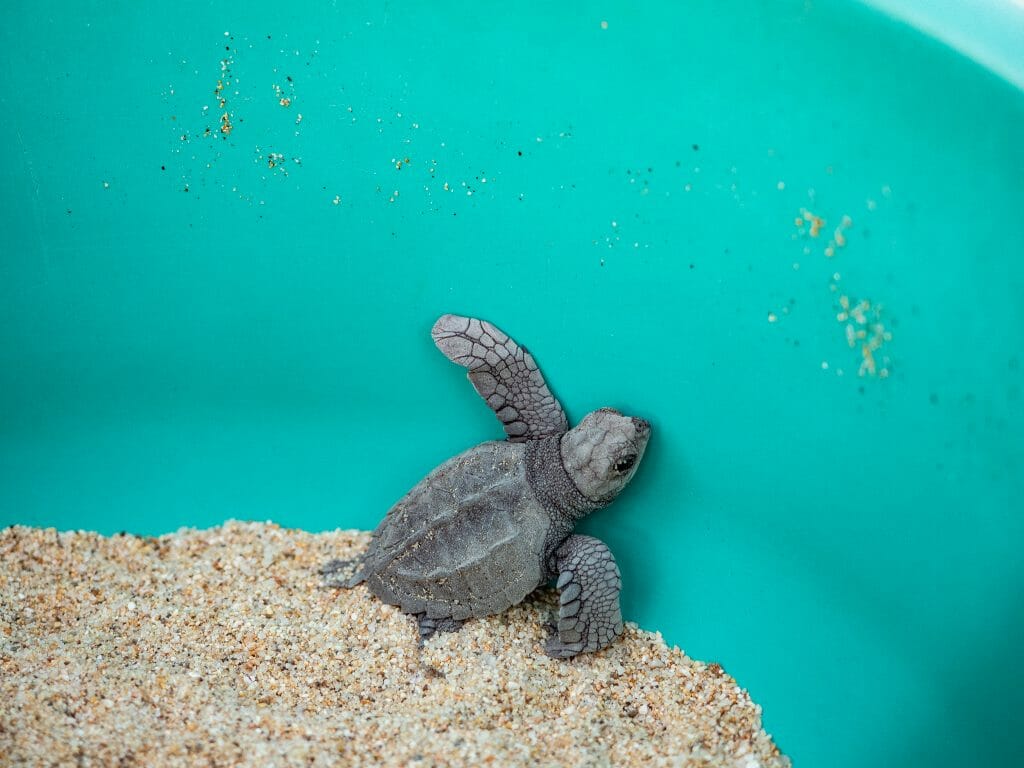

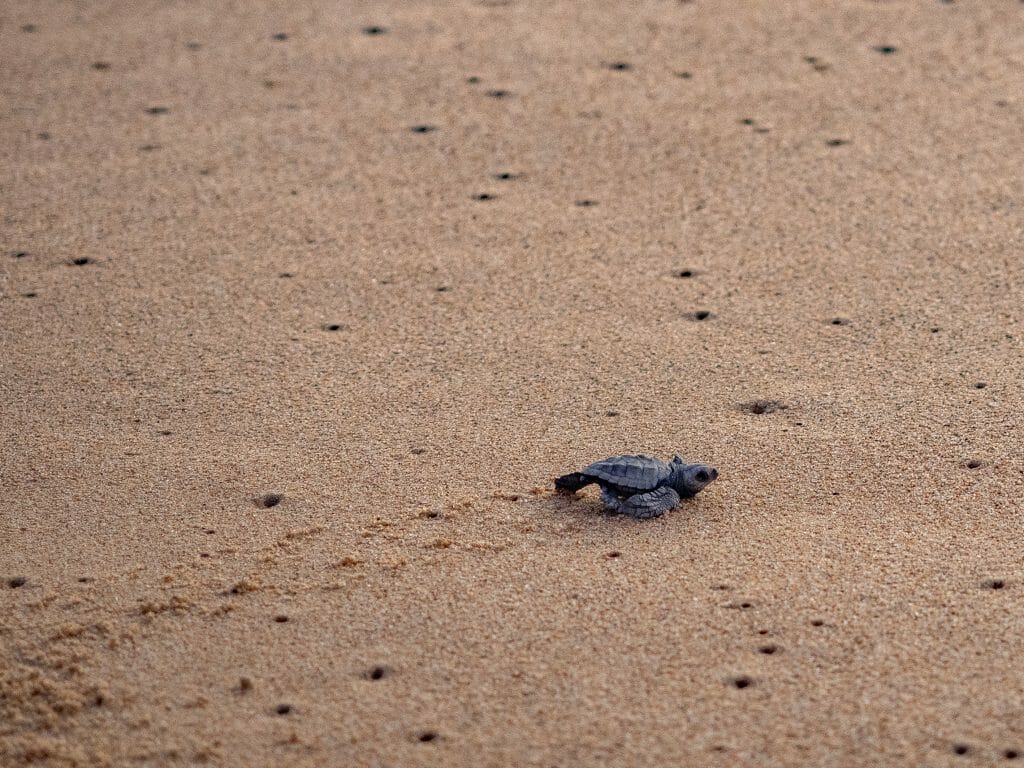
It’s possible to volunteer with Tortugueros Las Playitas as a “biologist for a day”, which does require some advance coordination and a $45 donation, but those short on time can still arrive to the beach just before sunset to learn about the program and watch the nightly release of sea turtles from December to May.
One of the things that struck me most, not only as a scientist but also as a staunch advocate for wildlife ethics, was the determination of staff and volunteers to interfere as little as possible in the lifecycle of the turtles they aim to protect.
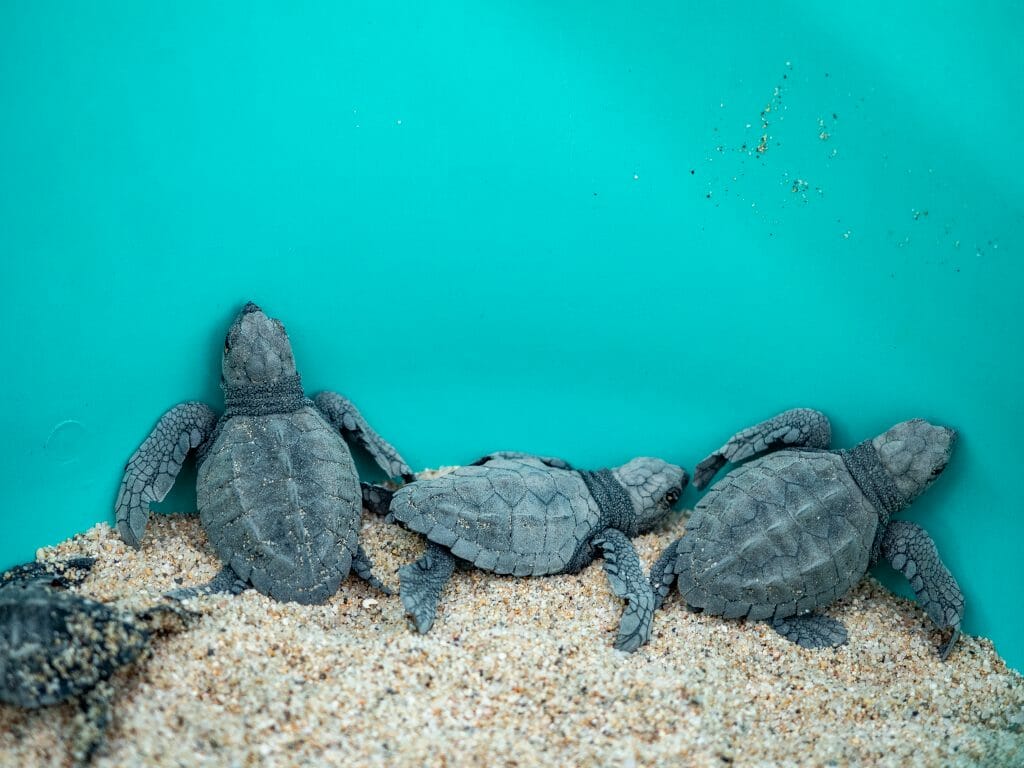
In the dark hours of each morning (around 2-6am), volunteers patrol the beach to collect new hatchlings from nests hidden under the sand, reducing the opportunity for feral dogs and other wild animals to eat or injure the baby turtles before they’ve even had a chance at survival.
Once collected, the turtles are “incubated” in optimal conditions with absolutely minimal human contact— this ensures that the baby turtles conserve the limited energy they’ve stored from the yoke for the long journey ahead, rather than exhausting themselves on the beach (or in the hands of an eager photographer) before their big swim.
Each night after sunset, when the temperature is lower and fewer predators stalk the beach, volunteers bring the newly-hatched turtles out of incubation and gently place them into the sand, close enough to the ocean that they make it to the water, but far enough that they have to struggle a little— this prepares them, again, for the challenges that await them in the ocean as they battle to find their first meal.
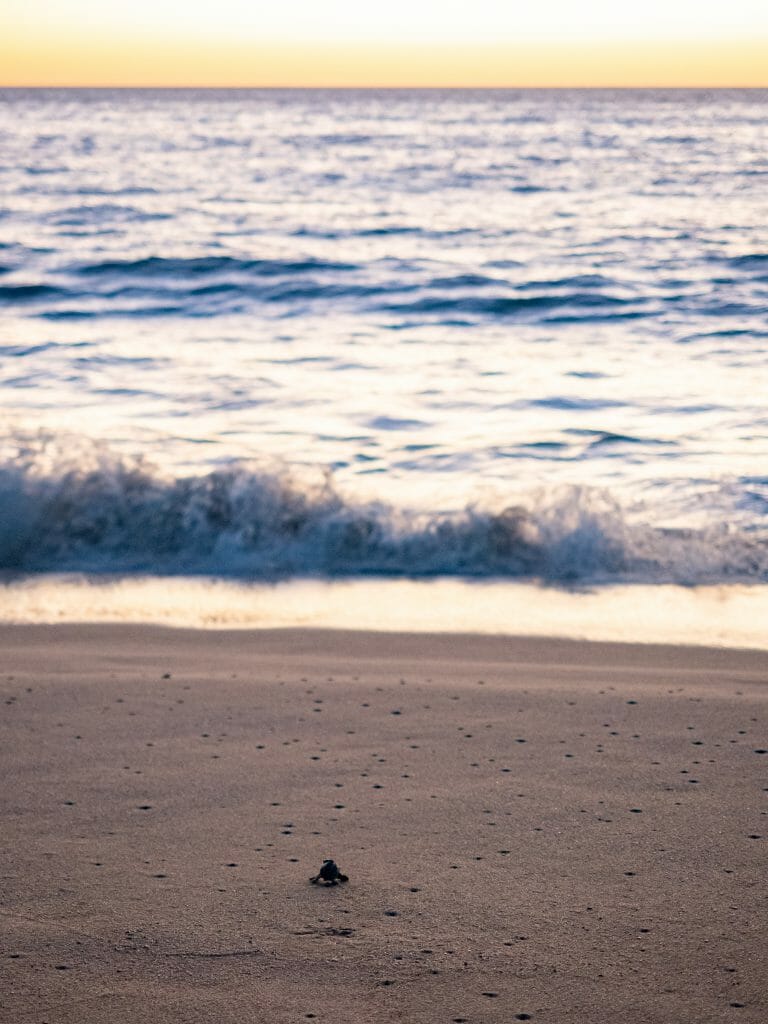
If you can’t tell, we were pretty awed by our experience with the turtles, and it’s something I too would travel specifically to Todos Santos to participate in again. Even if you’re not planning a trip to Baja anytime soon, you can still donate to this amazing program here— your money will go a long way towards continued conservation efforts and valuable scientific research!


Ferry from Baja to mainland Mexico
By the end of the week, we reluctantly tore ourselves away from Todos Santos for the short drive back to La Paz, where our ferry was scheduled to depart for mainland Mexico on Friday evening.
You are legally required to have Mexican auto insurance before crossing the border and, after extensive research, I choose an affordable policy with Baja Bound (which worked in Baja & mainland Mexico). Spoiler: we had an ACCIDENT in Mexico a few months later and the agents at Baja Bound handled the entire process for us, from speaking to the police, getting insurance information from the other driver, and we didn’t pay a single PESO out of pocket— I truly can’t recommend this company highly enough!

It was with great reluctance that we were even leaving Baja this week, a place we fell totally in love with (who doesn’t love free camping directly on the beach and kayaking with whales every morning?!), but we had a few very good reasons for the change of scenery.
Firstly, our Mexican visa is only valid for 6 months, and given how EASY it is to drive across to Baja & how challenging it was to organise the permit, ferry, etc for mainland Mexico… we decided we’d rather spend more time travelling through this part of Mexico NOW (since we’ve already gone through the effort of getting here) and just return to Baja another time. Without question, we will be back for more!
Secondly, and MORE importantly, my mum is getting married in Nuevo Vallarta next week! She’d already booked to meet us at a resort in January, but when she got engaged last year, plans quickly shifted to host the wedding here so that Dan and I could attend during our trip.
No matter how much we are loving Baja, I truly can’t wait to be mum’s maid of honour next week.

And so, we’d made reservations a few weeks ago to take our van on the TMC ferry, which sails from La Paz in Baja across the Sea of Cortez to Mazatlán, Sinaloa on the mainland.
At 16hrs (not including loading time), neither of us was particularly looking forward to the experience, but at least we’d be permitted to spend the night in our own van, which promised to be infinitely more comfortable than the lounge room onboard the ship.

After stopping quickly in town to eat one final meal at Taco Fish and to pick up provisions for the journey at our new favourite, McFisher, we arrived at the ferry terminal around midday to begin the long process of getting ourselves and our van onto the boat.
Despite worrisome stories about passengers being denied a spot on the ferry even with a reservation, we breezed through the customs line, weighed in (at a whopping 3,700kg / 8,200lbs), and paid for our ticket without incident.
Just as we were settling in for a long wait before boarding, staff came and tapped on our window, explaining (in a rather amusing exchange of half-understood Spanish) that only the driver could remain with the vehicle during loading and that I’d need to walk onto the ferry separately.
It made absolutely no sense, especially considering that I’d be back in our van for the duration of the sailing as soon as Dan drove on— just another example of the curious maze of rules and regulations we’ve observed here, most of which are enforced entirely at random. Such is Mexico, though, and I love it regardless.


The next 16hrs passed smoothly and I even managed to avoid major seasickness by remaining horizontal for the duration of our journey, snug in our bed with all the tacos we’d hoarded from McFisher.
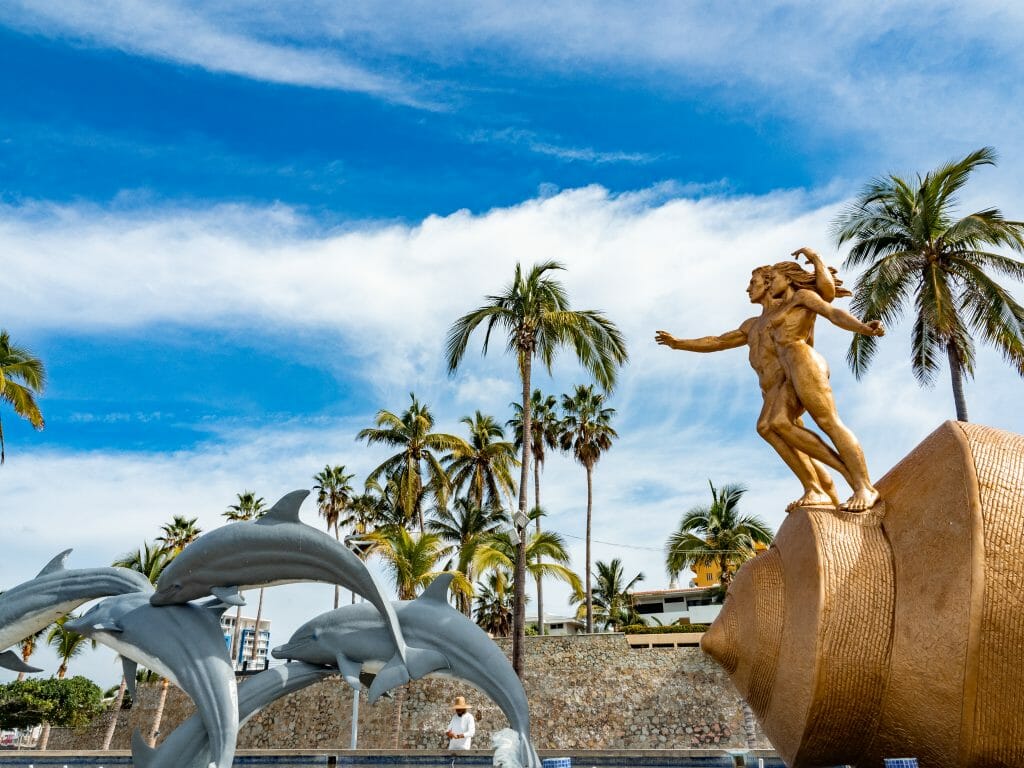
Mazatlán, Sinaloa
Arriving into Mazatlán in the early hours of the morning, and not as rusty as you might expect after a 16+ hour ferry from Baja, we had just 1 day in Sinaloa’s famous resort city before we needed to drive south through Nayarit to meet mum and her fiancé Kevin in Nuevo Vallarta.
But we were intent on making that single day count!


We began our day at La Fablula, home to some of the largest and most inventive chilaquiles I’ve yet had. In case you missed it previously, this is my latest obsession, a traditional breakfast dish that originated in central Mexico as a way to re-purpose the previous night’s leftovers (but that impossibly resembles nachos… for breakfast).
Imagine fried tortillas or totopos (corn chips) bathed in red and/or green salsa, smothered with beans and carne asada or chicken, and then topped with melted cheese, sour cream, red onion, and fresh cilantro… is your mouth watering? It should be.
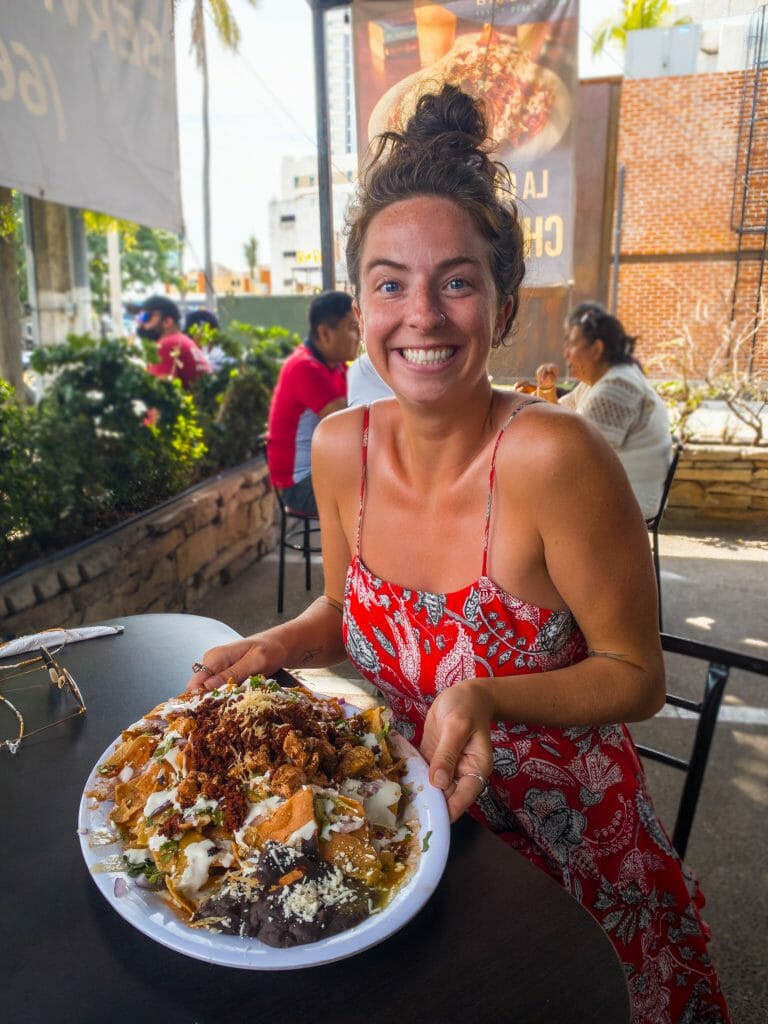
After one of the largest meals I’ve ever eaten in Mexico (yes, the photo above was a single order of chilaquiles, and even sharing, Dan and I had to take an afternoon siesta because we were quite literally too full to move), we strolled along the Malecón and admired the assortment of sculptures and vendors that dot the shoreline.
Next, we drove a short distance to El Faro and hiked our way up to the highest lighthouse in the Americas, with sweeping views of the coast and city below.
As far as free activities go, this was a pretty spectacular way to take in the expanse of Mazatlán, but we equally enjoyed the dozens of cats who flock to the stairs of El Faro— some kind soul has put bowls of cat food and water at regular intervals along the walk, and this attracts a healthy population of stray cats (and even some other cheeky visitors).
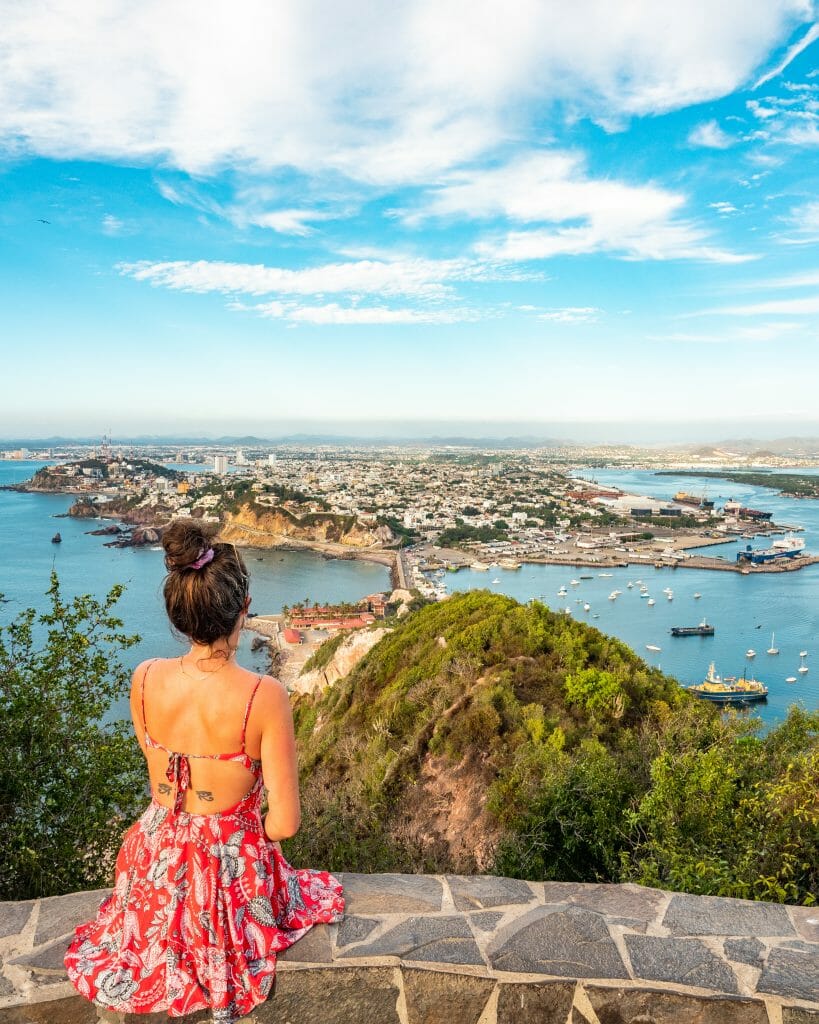


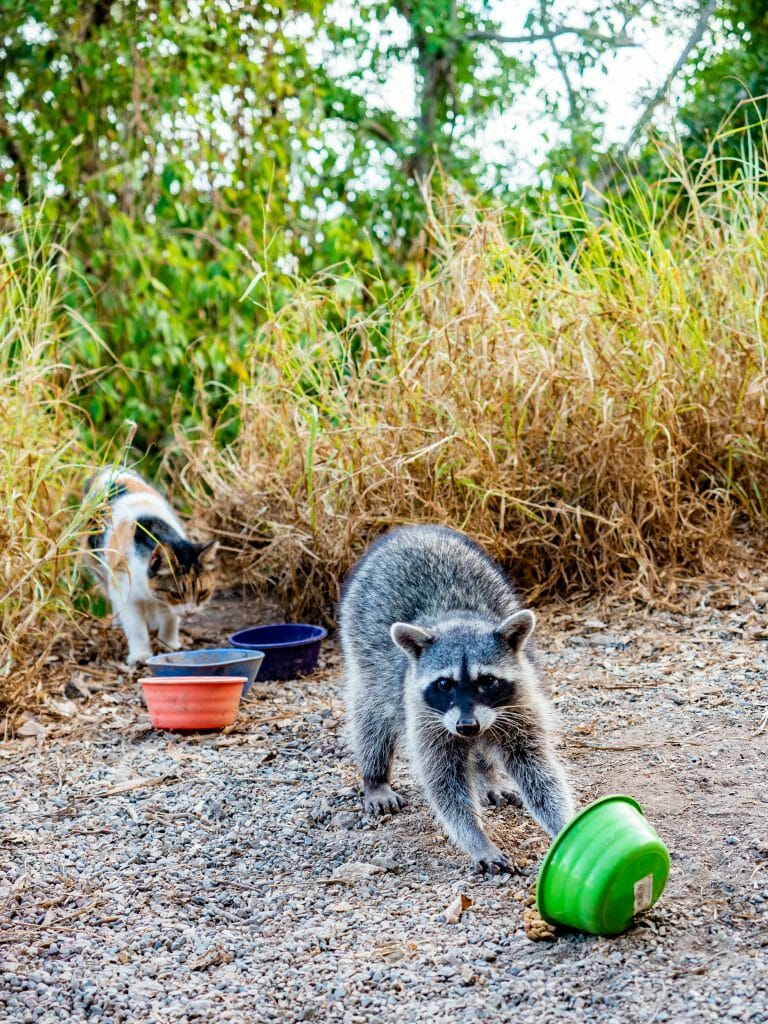
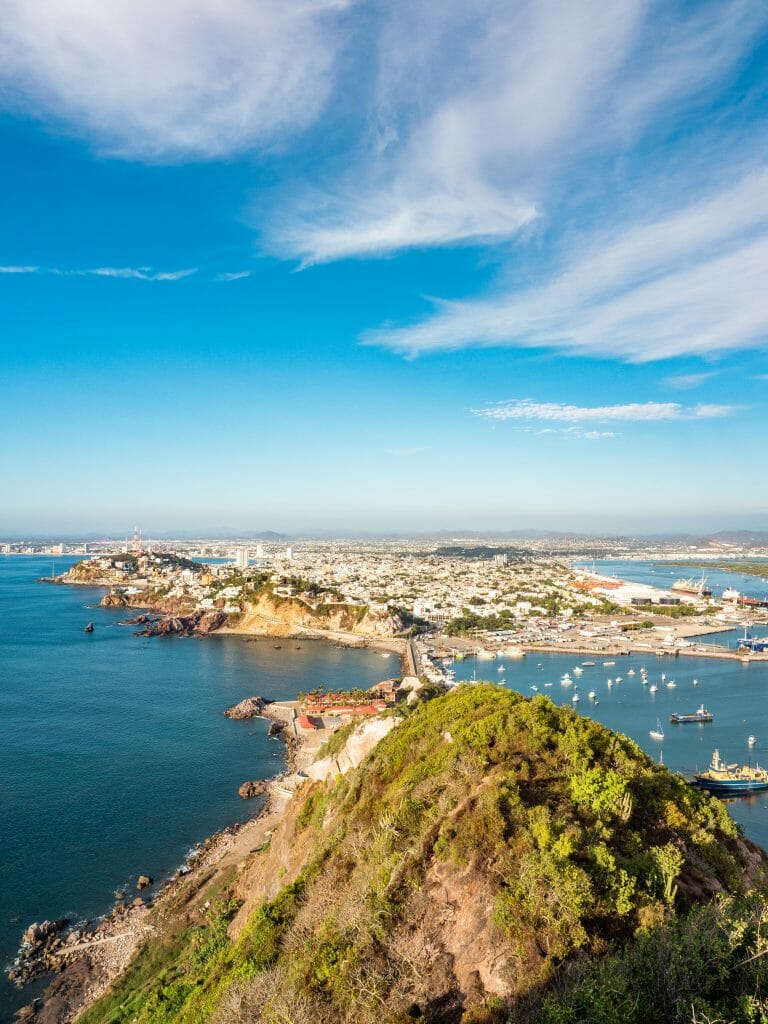
To end what had already been an incredibly busy first day in mainland Mexico, we drove (with considerable difficulty, due to the maze of one-ways and narrow alleys) into the Centro Histórico to admire the beautiful architecture and colourful lanes around Plazuela Machado.
This is exactly where we slept— on one of the quiet little streets in the heart of the city’s historic district. And by the following morning, we were off to Nayarit!
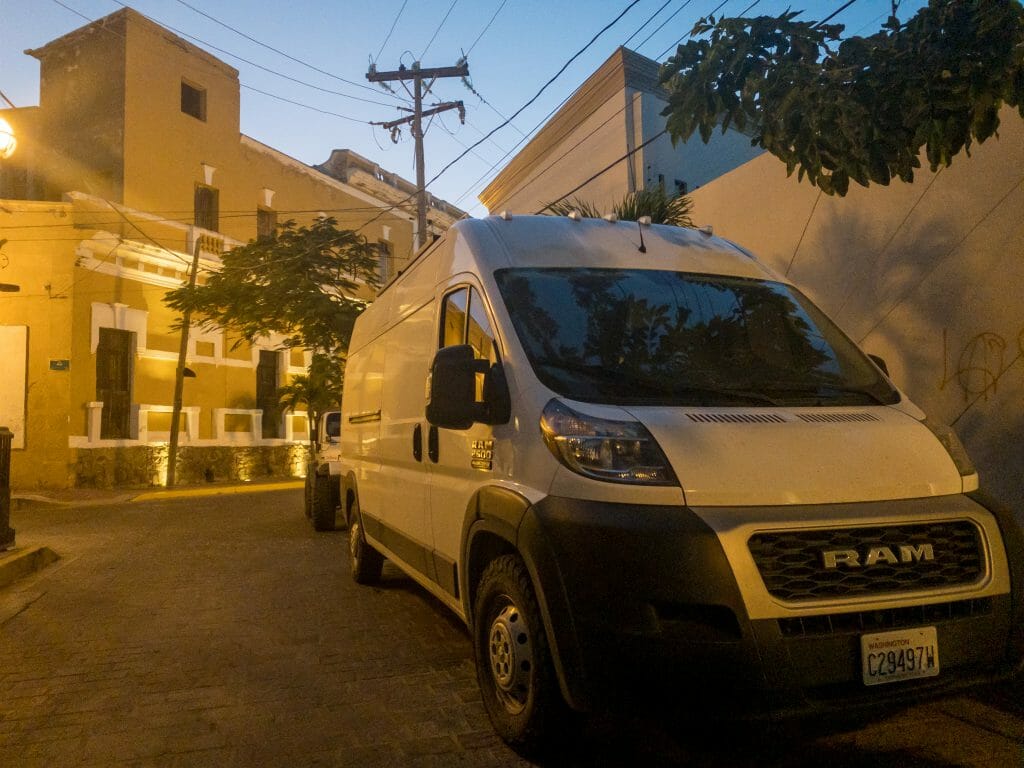
Where we stayed this week
As we transitioned into mainland Mexico this week, we bid farewell to all of our amazing free beach camping and settled into our new norm— street parking. Stay tuned for our musings on this not insignificant change!
- Boondocking at La Pastora in Todos Santos, BCS (free; 2-6 Jan)
- Overnight ferry from La Paz to Mazatlán ($313 for the ferry; 7 Jan)
- Street parking near Plaza Machado in Mazatlán, Sinaloa (free; 8 Jan)
Everything you need to know about camping in Baja + GPS coordinate for all of these spots: THE ULTIMATE BAJA CAMPING GUIDE (+ 35 OF THE BEST VANLIFE & RV CAMPSITES!)
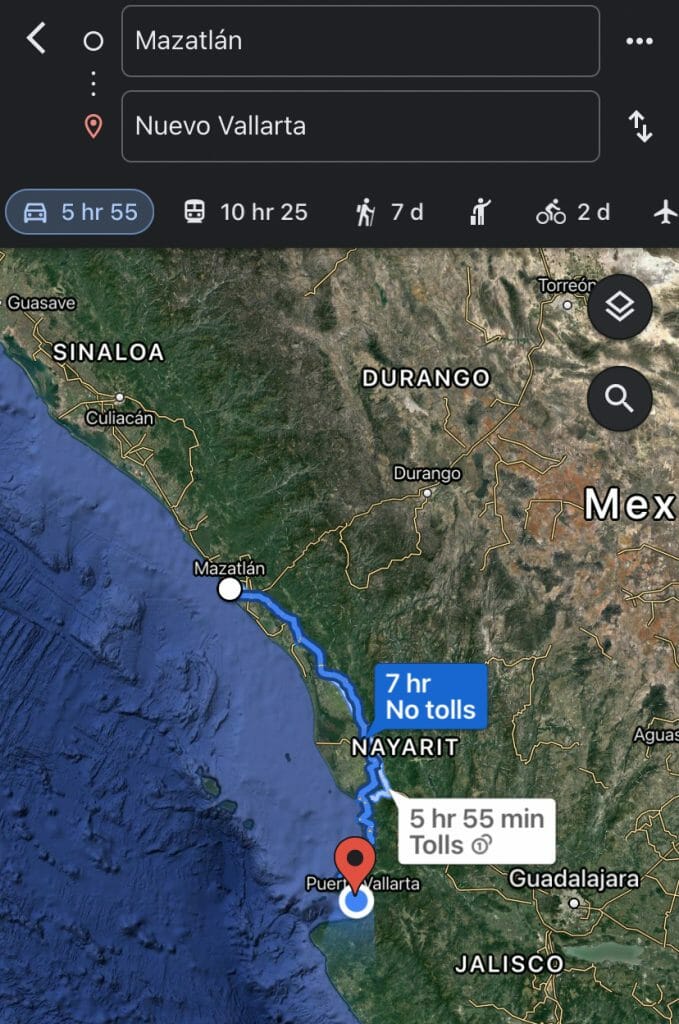
Read more about Baja, Mexico
start here -> The ultimate road-tripper’s guide to Baja, Mexico
How to get the best Mexican auto insurance for a converted van or camper
Vanlife Baja & Mexico: A guide to crossing the border + all required permits (FMM & TIP)
The ultimate Baja camping guide (+ 35 of the best vanlife & RV campsites!)
Baja vanlife road trip itinerary for 1-3 months (+ driving directions & camping in 2023)

The Comments
Leo
Nice places,been there. Last year month of May, I drove from Phoenix to Los Cabos back and forth, crossing trough Calexico.
Nice long drive, was in my bucket list. Glad you enjoyed it.
brooke brisbine
LeoThanks for reading, Leo! It really is a bucket list road trip, what an incredibly beautiful part of the world.
It certainly won’t be my last time in Baja!